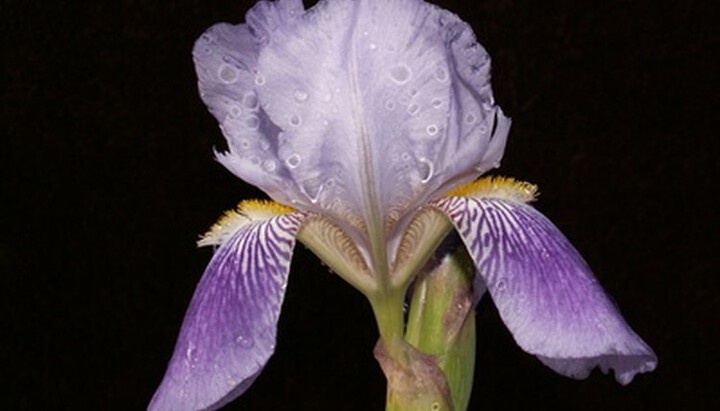
Bearded iris, also known as Iris germanica, is a long-lived perennial grown from thick, fleshy roots, or rhizomes. Thousands of cultivars exist, all valued for their attractive, showy flowers and ease of care. Bearded iris plants bloom in spring, producing blossoms in shades of white, pink, red, orange, yellow, blue and violet, depending on variety. The plant's common name derives from the dense, hairy line seen on the outer, drooping petals, giving the appearance of a “beard.” Hardy in USDA zones 3 through 9, bearded iris thrives in most areas of the country with only minimal care.
Plant bearded iris in summer or fall in a location that receives sunlight through most of the day with some partial shade. Spread a 3-inch layer of organic compost over the planting site and use a garden tiller to work it into the soil before planting. Space bearded iris plants 8 to 10 inches apart.
Apply a 2-inch layer of mulch to the ground surrounding the plant during mid-fall to prevent soil heaving. Begin the layer about 2 inches from the base of the plant to allow air circulation. Remove the mulch during early spring, just as active growth resumes.
Water once per week to keep the soil consistently moist until flowering has ended. Reduce watering frequency to once every two weeks from the end of flowering until the following spring, when the original watering schedule should be resumed.
Feed bearded iris immediately after planting, and twice per year thereafter, once during late winter and again after flowering ends. Use a low-nitrogen 5-10-10 NPK fertilizer to prevent burning the rhizomes. Apply according to the manufacturer's directions.
Cut flower stalks back to about 2 inches in height immediately after flowers fade to prevent the formation of seeds and to minimize the risk of disease. Cut the leaves back to 6 to 8 inches above the ground during early fall, around the same time you prune flower stalks.